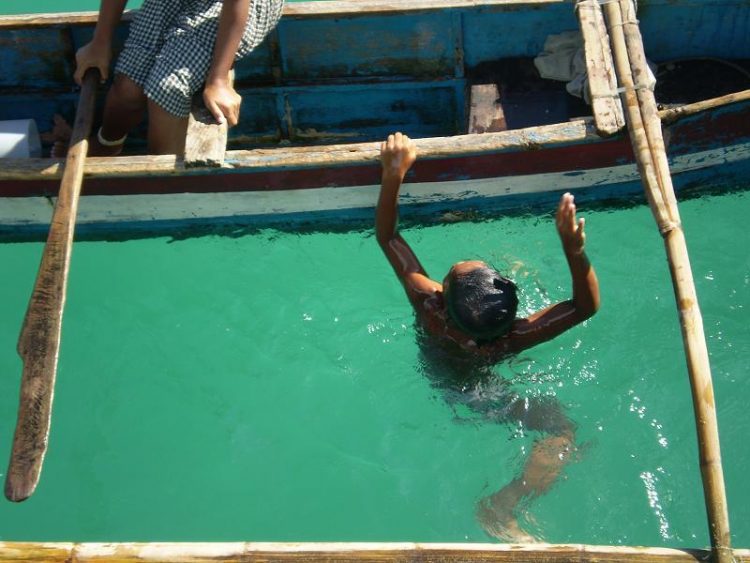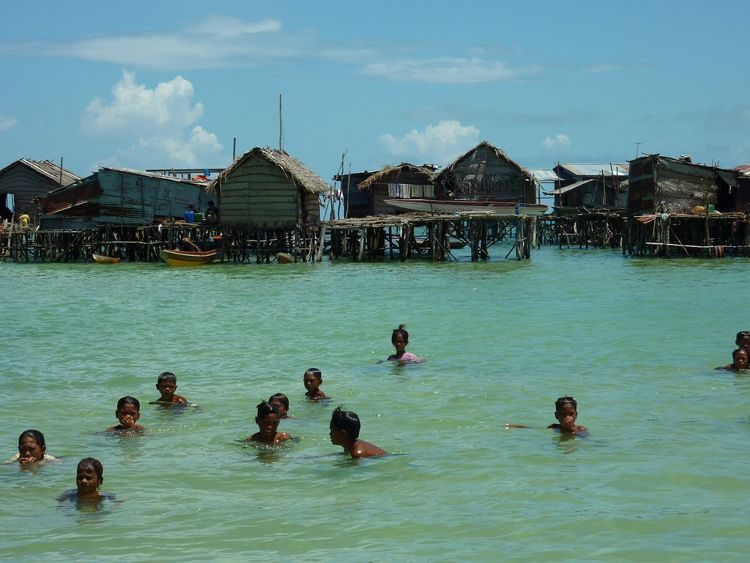Known as ‘Sea Nomads’, the Bajau people have wandered the waters of southern Asia for thousands of years, living in house boats and free diving for fish. They’ve long been known for their ability to stay underwater for long periods of time, but until recently, no one really knew how they were able to keep their breath for so long.
According to a recently published study from Cambridge University, the Bajau people have 50 percent larger spleens than their land-dwelling neighbours, which plays a key role in how long they can stay underwater. It plays a key part in what’s known as the “human dive response” or “dive reflex”, preferentially distributing oxygen to the brain and heart, and enabling submersion for long periods of time. As the heart rate slows, blood is directed to the vital organs, and the spleen contracts to push oxygenated red blood cells into the circulation. In an average person, the spleen can boost oxygen levels by 9 percent, but even more in the case of the Bajau, due to its unusually large size.

Photo: Ronnie Puckett/Flickr
“There’s not a lot of information out there about human spleens in terms of physiology and genetics, but we know that deep diving seals, like the Weddell seal, have disproportionately large spleens,” lead study author Melissa Ilardo said. “I thought that if selection acted on the seals to give them larger spleens, it could potentially do the same in humans.”
Ilardo, who embarked on this groundbreaking research for her PhD, spent several months with the Bajau, in Jaya Bakti, Indonesia, conducting ultrasound scans and taking genetic samples, and comparing them with their land-based neighbours, the Saluan. Analysis showed that the Bajau have permanently enlarged spleens that don’t get bigger only when diving.
DNA analysis revealed that the Bajau have a gene called PDE10A, which is lacking in the Saluan. Scientists believe that it is gene that alters the Sea Nomads’ spleen size by adjusting thyroid hormone levels.

Photo: Torben Venning/Flickr
“We believe that in the Bajau they have an adaptation that increases thyroid hormone levels and therefore increases their spleen size,” Melissa Ilardo said. “It’s been shown in mice that thyroid hormones and spleen size are connected. If you genetically alter mice to have an absence of the thyroid hormone T4, their spleen size is drastically reduced, but this effect is actually reversible with an injection of T4.”
The Bajau people do not dive competitively, so it’s hard to say precisely how long they can remain underwater, but their free-diving ability is legendary, with one diver telling Melissa Ilardo that he could stay submerged for around 13 minutes at a time. They can spend as much as 60 percent of their day underwater, diving up to 230 feet (70 meters), using only some weights to help them descend faster and a pair of rudimentary wooden goggles.
It’s hard to say if the Bajau’s diving abilities can be attributed solely to their unusually large spleens, but this study suggests their evolved organs definitely play a big part.
The Bajau’s evolutionary adaptation sounds very much like that of the Moken people living along the coasts of Burma and Thailand. Known as “Sea Gypsies”, they have developed superhuman underwater vision that helps them gather tiny shellfish and other food from the ocean floor at depths as low as 75 feet.






